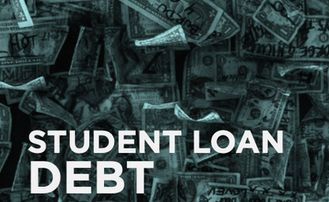Photos: Twitter\NYSUT\YouTube
Tuesday, the Department of Education announced steps that will bring borrowers closer to public service loan and income-driven repayment (IDR) forgiveness by addressing historical failures in the administration of the federal student loan programs. Federal Student Aid (FSA) estimates that these changes will result in immediate debt cancellation for at least 40,000 borrowers under the Public Service Loan Forgiveness (PSLF) Program.

Several thousand borrowers with older loans will also receive forgiveness through IDR. More than 3.6 million borrowers will also receive at least three years of additional credit toward IDR forgiveness.
“Student loans were never meant to be a life sentence, but it’s certainly felt that way for borrowers locked out of debt relief they’re eligible for,” said U.S. Secretary of Education Miguel Cardona. “Today, the Department of Education will begin to remedy years of administrative failures that effectively denied the promise of loan forgiveness to certain borrowers enrolled in IDR plans. These actions once again demonstrate the Biden-Harris administration’s commitment to delivering meaningful debt relief and ensuring federal student loan programs are administered fairly and effectively.”
These actions are part of the Department’s commitment to address historical failures in the administration of the federal student loan program and support student loan borrowers through the pandemic. They also help address the impact of the COVID-19 pandemic on borrowers with lower incomes and high debt loads. Today’s steps will help restore the promise of IDR plans by ensuring that borrowers have an affordable and effective path out of debt.
Beyond the immediate corrective actions announced today that will provide relief to borrowers harmed in the past, FSA will take action to ensure that borrowers receive these benefits in the future. Below are the actions being taken today.
Ending “Forbearance Steering”
Department regulations require that borrowers who are facing difficulty making their loan payments get clear and accurate information from servicers about their options for staying out of delinquency, including IDR plans, and the financial consequences of choosing short-term options like forbearance. However, FSA reviews suggest that loan servicers placed borrowers into forbearance in violation of Department rules, even when their monthly payment under an IDR plan could have been as low as zero dollars. These findings are consistent with concerns raised by the Consumer Financial Protection Bureau and state attorneys general. A borrower advised to choose an IDR plan instead of forbearance can get a reduced payment, stay in good standing, and make progress toward loan forgiveness. A borrower advised to choose forbearance – particularly long-term consecutive or serial uses of forbearance – can see their loan balance and monthly payments grow due to interest capitalization and lead to delinquency or default.
The Department will address forbearance steering by:
- Conducting a One-Time Account Adjustment to Count Certain Long-Term Forbearances toward IDR and PSLF Forgiveness
Borrowers steered or inappropriately placed into long-term forbearances miss out on critical progress toward IDR and PSLF forgiveness; this can set them back years. The Department’s regulations and servicer contracts have safeguards, including a 12-month limit for any single use of forbearance, and a 36-month cumulative limit on discretionary forbearance. A review of past forbearance use shows that long-term use of forbearance was remarkably widespread. More than 13% of all Direct Loan borrowers between July 2009 and March 2020 have used forbearance for at least 36 months cumulatively.
These changes will be applied automatically to borrowers’ accounts later this year. To mitigate the harms of inappropriate steering into long-term forbearance, FSA will conduct a one-time account adjustment that will count forbearances of more than 12 months consecutive and more than 36 months cumulative toward forgiveness under IDR and PSLF. Borrowers who were steered into shorter-term forbearances will be able to seek account review by filing a complaint with the FSA Ombudsman at StudentAid.gov/feedback.
Increasing Oversight of Servicers’ Forbearance Use FSA will target forbearance steering by restricting servicers’ ability to enroll borrowers in forbearance by text or email, conducting an external review of patterns of forbearance use and servicers’ practices to identify other potential changes to address steering, and working in partnership with the Consumer Financial Protection Bureau to do regular audits of forbearance use. This will build upon other FSA efforts to improve oversight of loan servicing activities, including stronger accountability provisions in servicing contracts, renewing partnerships with federal and state regulators and clarifying its position on federal preemption of state oversight of loan servicing.
FSA will begin implementing these changes immediately, but borrowers may not see the effect in their accounts until the last quarter of 2022.
Tracking Progress Toward IDR Forgiveness
IDR plans offer substantially lower monthly payments for most borrowers. Borrowers on most plans are entitled to forgiveness after 20 years of payments and depend on FSA and its servicers to accurately track their progress toward relief. However, the Department’s review of IDR payment-tracking procedures has revealed significant flaws that suggest borrowers are missing out on progress toward IDR forgiveness.
The Department is committed to fixing this problem swiftly and permanently. Secretary Cardona has directed FSA to:
- Conduct a One-Time Revision of IDR Payments to Address Past Inaccuracies
To fully address past issues with IDR payment counting, FSA will do a one-time revision of IDR-qualifying payments for all Direct Student Loans and federally-managed Federal Family Education Loan Program (FFEL) loans. Any months in which borrowers made payments will count toward IDR, regardless of repayment plan. Payments made prior to consolidation on consolidated loans will also count. This fix is necessary to correct for data problems and past implementation inaccuracies. Any borrower who has made the required number of payments for IDR forgiveness based on this payment-count revision will receive loan cancellation automatically. Additionally, FSA will count months spent in deferment prior to 2013 toward IDR forgiveness (with the exception of in-school deferment) for this same population of borrowers to address concerns that, prior to that date, its data cannot distinguish IDR-eligible deferments from other deferments.
- Permanently Fix IDR Payment Counting by Reforming FSA’s IDR Tracking
Borrowers should be able to rely on FSA and its loan servicers to keep accurate records of their progress toward forgiveness through IDR plans. FSA will issue new guidance to student loan servicers to ensure accurate and uniform payment counting practices, and it will track payment counts in its own modernized data systems. In 2023, FSA will begin displaying IDR payment counts on StudentAid.gov so borrowers can view their progress after logging into their accounts. In addition, the Department plans to revise the terms of IDR through rulemaking to further simplify payment counting by allowing more loan statuses to count toward IDR forgiveness, including certain types of deferments and forbearances.
FSA will begin implementing these changes immediately, but borrowers may not see the effect in their accounts until the last quarter of 2022.

Tackling Student Debt
From Day One, the Biden-Harris Administration has been committed to making student loan relief programs work for everyone, including by addressing failures that deny borrowers the benefits they earned. Efforts to revise IDR regulations will produce substantially more affordable monthly payments for millions of borrowers. Today’s actions complement steps the Administration has already taken within its first year to cancel more than $17 billion in debt for 725,000 borrowers in addition to extending the student loan payment pause, saving 41 million borrowers billions of dollars in payments each month. The Department has now approved approximately:
$6.8 billion for more than 113,000 public servants through improvements to PSLF;
$7.8 billion for more than 400,000 borrowers who have a total and permanent disability;
$1.2 billion for borrowers who attended ITT Technical Institutes before it closed; and
Nearly $2 billion to 105,000 borrowers who were defrauded by their school.
To make college more affordable for current and future students, President Biden has called for and Congress has included in bipartisan legislation a $400 increase in the maximum Federal Pell Grant—the largest increase in the maximum award in over a decade.
To protect students and taxpayers from predatory or low-value colleges, the Department has also restored the FSA Office of Enforcement and started efforts to strengthen key rules including borrower defense to repayment and gainful employment.







